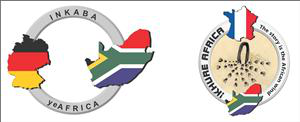Speaker
Ms
Claire Geel
(NMMU MSc)
Description
This is a study on the geochemical and petro-physical properties of shales from the Prince Albert, Whitehill and Collingham Formations of the Lower Karoo Supergroup, near Jansenville in the Eastern Cape. Results are based on two boreholes sited on a southerly dipping limb of a shallowly plunging syncline. Lithological, sedimentological, structural, geochemical and petro-physical analyses provide detail of the characteristics of these rocks which have become the focus of interest for potential shale gas.
Petrographic, XRF, XRD and SEM analyses from black shales of the Whitehill Formation, show that these rocks are composed of quartz, illite, muscovite and chlorite, with lesser plagioclase and accessary pyrite. The Collingham Formation rocks have the largest proportion of quartz content which gives this formation a higher brittleness factor than that of the Prince Albert and Whitehill Formations. Mercury porosimetry analyses yield meso- and macro porosity in black shales of the Whitehill Formation of 0.83%. This confirms that these sediments are tightly packed. Thin layers of dolomite within the shales have porosities of 2.9%, and pores measuring 1.5µm wide.
Total organic carbon content (TOC) and Rock Eval pyrolysis data show that black shales of the Whitehill Formation are high in organic carbon and have an average TOC value of 4.5 wt%. The TOC of shales in the Collingham and Prince Albert Formations is <1 wt%. XRF and (13C and 15N) light stable isotope analyses suggest that the Prince Albert and Whitehill Formations were deposited under anoxic conditions, sourced by a mix of marine and terrestrial organic matter, whereas the Collingham Formation was deposited under more oxidizing conditions.
High maximum temperature values (Tmax average: 528), low hydrogen index values (HI average: 6.7) and high reflectance measurements on bitumen (BRo= 4%) characterise these sediments as overmature. As a consequence pyrolyses and thermovapourization data display few hydrocarbon yields.
The main characteristics of black shales in the study area indicate that their overmaturity with respect to hosting gas deposits is attributed to tectono-metamorphic overprinting during the Cape Orogeny. Rocks of the lower Karoo Supergroup outcropping within the area of the Cape Fold Belt therefore have limited potential for hosting gas deposits.
Keywords: shale gas; TOC; Whitehill Formation; overmaturity
Primary author
Ms
Claire Geel
(NMMU MSc)
Co-authors
Dr
Hans-Martin Schulz
(GFZ, Sr Scientist, Section 4.3)
Prof.
Maarten de Wit
(NMMU AEON)
Prof.
Peter Booth
(NMMU)

